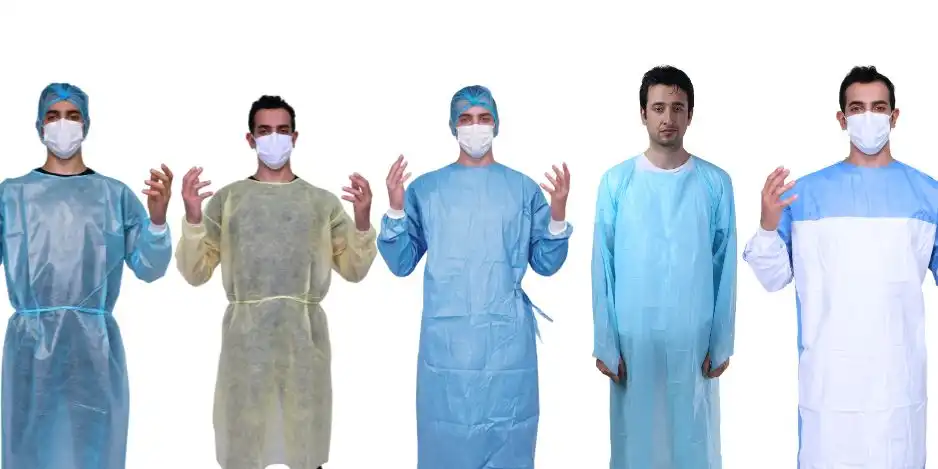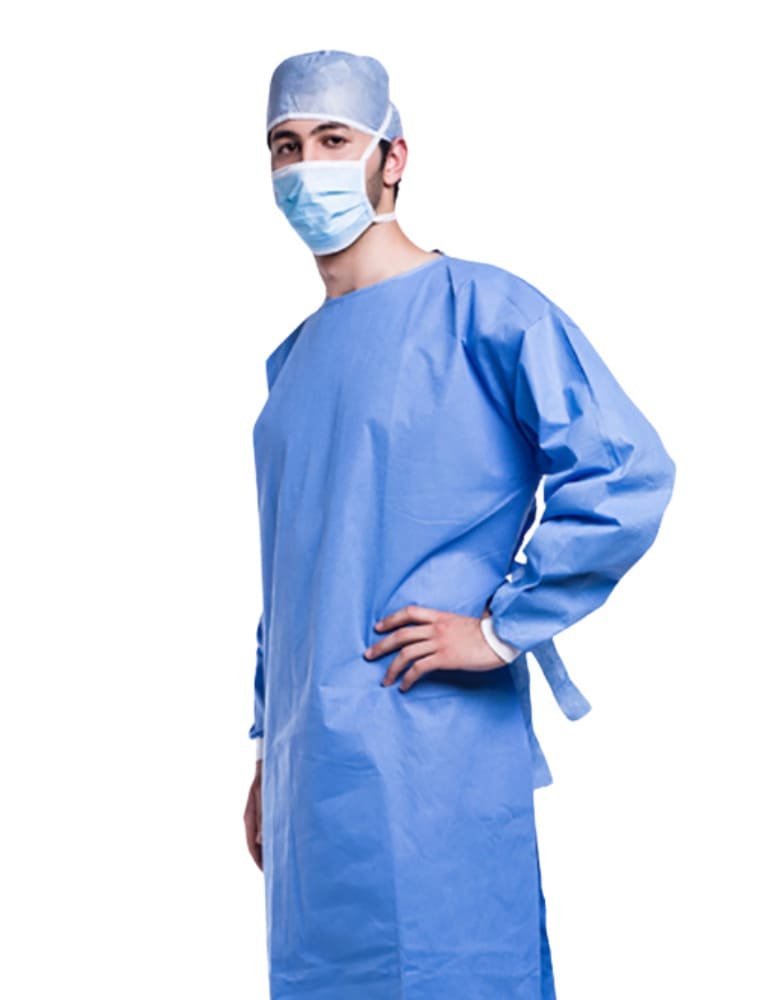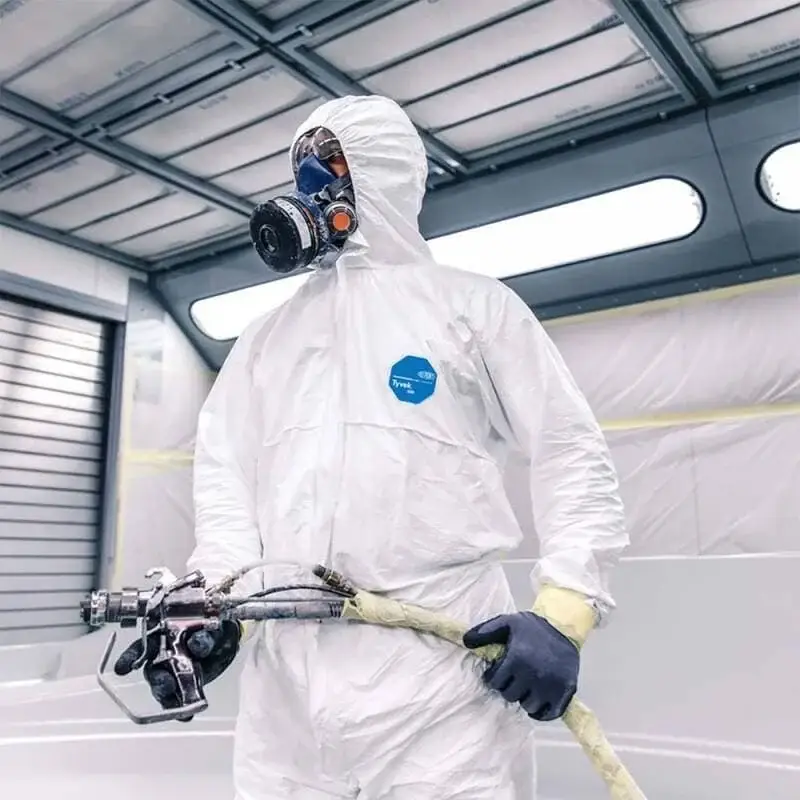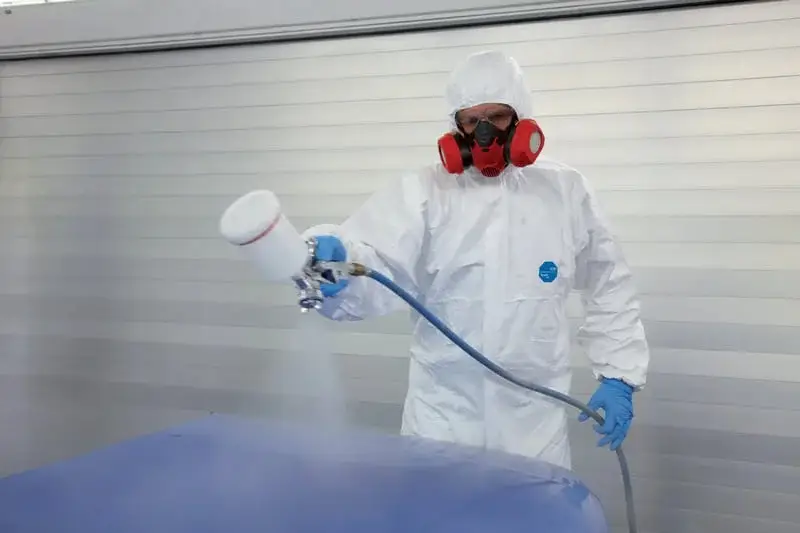Table of Contents
Medical gowns provide a protective barrier against contaminants for healthcare workers and patients. These gowns help maintain sterile environments, especially in procedures with high risks of microorganism transfer. By reducing cross-contamination, medical gowns support safer interactions in hospitals and clinics.
This article explores different types of medical gowns, each suited to specific situations in healthcare. For example, isolation gowns are used for routine patient care, while surgical gowns are designed for high-risk procedures. Each type includes safety features tailored to the demands of various medical tasks. Understanding these distinctions is essential for healthcare facilities to protect both staff and patients effectively.
Choosing the right medical gown significantly enhances healthcare safety. It minimizes potential hazards, allowing medical teams to focus on patient care without unnecessary risks.

Medical Gown Protection Levels
Level 1: Basic Protection
Level 1 gowns provide basic protection for low-risk situations. They help protect against minor fluid exposure, making them suitable for general patient care, standard isolation, or as visitor cover gowns. In short, these gowns offer a light barrier against small splashes.
Level 2: Low-Risk Shielding
For tasks with a bit more exposure risk, such as blood draws, minor suturing, or ICU rounds, Level 2 gowns are a good choice. They are designed to shield against moderate splashes and larger fluid contact, fitting for slightly messy but controlled environments like pathology labs.
Level 3: Moderate-Risk Barrier
Level 3 gowns are built for moderate-risk situations, where fluid exposure risk is higher. They are ideal for settings like emergency rooms or trauma cases. If you’re performing an arterial blood draw or inserting an IV, Level 3 gowns help block larger fluid amounts and protect against pathogens.
Level 4: Maximum Protection for High-Risk Scenarios
Level 4 gowns offer the highest protection level, crucial in high-stakes settings like cardiovascular surgeries or infectious disease management. These gowns provide the strongest resistance to fluids and pathogens, keeping healthcare providers safe from dangerous exposures.
Isolation Gowns (Non-Surgical Isolation Gowns)
Isolation gowns are essential in lower-risk healthcare settings. Mainly used during routine care or non-invasive procedures, these gowns offer basic protection against bodily fluids but aren’t designed for high-exposure scenarios, such as surgeries or aerosol-generating procedures. Classified as Class I medical devices, they are exempt from premarket review, making them easily available for outpatient clinics, routine exams, and general care settings.

Surgical Gowns
Surgical gowns are the primary protective garment for healthcare providers in sterile environments. They protect both healthcare workers and patients during invasive procedures, covering critical zones like the front of the body and arms, though the back may provide limited or no protection.
As Class II medical devices, surgical gowns must meet FDA performance standards and regulatory guidelines. They also need to comply with ANSI/AAMI PB70 Level 3 or 4 standards, ensuring they offer a high level of barrier protection for surgeries and other sterile procedures.

Surgical Isolation Gowns
For medium to high contamination risks, surgical isolation gowns offer a greater level of protection than standard surgical gowns. They cover the entire front and back of the body, except for cuffs, hems, and bindings. These gowns must meet the highest liquid barrier standards and adhere to strict Class II medical device regulations set by the FDA.
Hospital Gown vs. Patient Gown
While “patient gown” and “hospital gown” may sound similar, they serve different purposes and have distinct designs.
Definitions and Purposes
Patient Gowns
Patient gowns, often referred to as hospital gowns, are made for patients undergoing medical exams or procedures. They prioritize comfort and easy access for healthcare providers, typically made from cotton or disposable materials and featuring back ties for modesty. They come in various designs, like full-back, split-back, and snap-front styles, to suit different needs.
While patient gowns offer easy access for exams, they do not protect against infections. Their main focus is comfort and convenience for minor treatments.
Hospital Gowns
The term “hospital gown” covers a wider category, including both patient gowns and protective garments for healthcare staff. This category includes surgical gowns and isolation gowns designed to shield against infectious agents. While patient gowns emphasize comfort, healthcare worker gowns provide critical protection during high-risk procedures.
In short, patient gowns focus on comfort and accessibility for routine care, while hospital gowns encompass a range of garments, with varying levels of protection for both patients and staff. Understanding these distinctions helps ensure the right gown is chosen for each medical setting.
Disposable vs. Reusable
Disposable Gowns
Disposable medical gowns, usually made from materials like polypropylene, SMS, CPE, and PE-coated fabrics, are designed for single use. They prevent contamination effectively in critical environments and reducing cross-contamination risks in high-exposure areas.
Reusable Gowns
Reusable gowns are made from durable fabrics suited to settings with lower fluid exposure. They can withstand repeated washing while keeping protective features intact. Though they require a higher initial cost, reusable gowns are often more cost-effective and eco-friendly over time, making them a good choice for less critical settings.
Choosing between disposable and reusable medical gowns helps healthcare facilities match protection needs with cost efficiency and environmental impact.
Features and Designs of Medical Gown

Adjustable Closures
Medical gowns often include adjustable closures at the neck, like hook-and-loop fasteners or tie-backs, allowing healthcare workers to adjust the fit for comfort and secure coverage.
Waist closure: Surgical gowns have multiple waist ties for a secure fit during procedures, while isolation gowns feature a single tie for easier donning in less critical settings.
Sleeve Types
Medical gowns offer different sleeve options for specific needs.

Long sleeves with elastic or knitted cuffs provide full arm coverage, keeping sleeves in place.

Thumb loop sleeves can secure the sleeves during procedures.

Short sleeves offer a lightweight, breathable alternative in less intensive environments, balancing protection with comfort.
Seam Types
Seams play a crucial role in the durability and protection of medical gowns, varying by intended use and required protection level:
-
Serged Seams: Found in basic gowns, these offer moderate protection, suitable for low-risk environments.
-
Ultrasonic Heat-Sealed Seams: These seams offer a higher level of protection, ideal for moderate-risk situations where fluid resistance is needed.
-
Bonded Seams: Also known as glued seams, designed for high-risk settings, ensuring a strong barrier against fluids and contaminants.
Choosing the right seam type is essential for healthcare facilities, as it affects the gown’s overall performance based on specific protection needs.
Different Medical Gowns for Different Settings
Surgical Procedures
In high-risk settings, medical gowns act as barriers to infection. They help keep a sterile field during surgery, which is crucial for patient safety and controlling infections.
Routine Care
For low-risk procedures, medical gowns offer basic protection. Although sterility is less critical, wearing the right gown still shields both healthcare workers and patients from potential contaminants.
Handling Hazardous Drugs
When handling hazardous drugs, gowns need specific features. They should be made from materials like polyethylene-coated polypropylene or other laminates, close in the back, and have elastic or knit cuffs to prevent exposure.
In conclusion, understanding medical gown types is essential for choosing the right protection level in healthcare settings. From basic isolation gowns to specialized surgical options, each type serves a specific purpose in preventing contamination and ensuring safety. By matching the gown to your setting and risk level, you can maintain a secure healthcare environment while keeping both staff and patients protected.
For high-quality medical gowns, especially disposable ones, reach out to us. With 20+ years in the industry, our China-based factory offers a range of gowns to meet your needs. Contact us today for more details!







